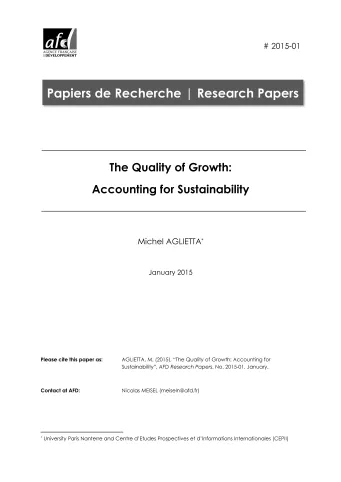Share the page
The Quality of Growth: Accounting for Sustainability
Published on

This paper has three purposes. First, it follows the UN conceptual and measurement approach in providing a welfare theoretic framework for sustainability. The intergenerational conditions for sustainable development involve shadow prices that are social marginal contributions to social welfare, allowing a determination of inclusive wealth and comparison of countries according to variations over time.
Second, the inclusive wealth model can guide sustainable development policies provided that shadow prices can be estimated. Shadow prices are not revealed by markets because of the many externalities that impinge upon inclusive wealth, not least the interactions between ecological and economic processes. To improve inclusive wealth, the structure of capital that comprises it must be transformed through investments that capture the relevant externalities. Since investment projects are made by decentralized firms, they need the right incentives. These will depend on the prospective structure of shadow prices along the expected future path of the economy. The measurement tools to promote inclusive wealthfriendly investments involve an overhaul of both national and business accounting as well as a deep change in corporate governance from shareholder value to include both inside and outside stakeholder participation.
Third, the main externality threatening sustainable development is climate change, an externality that is not substitutable to existing real assets that are part of social wealth. Climate change should be handled urgently via policies dedicated to both GHG reduction and adaptation. Clean investments concern all sectors of production; therefore incentives depend on carbon pricing and require a massive reorientation of financing. The paper shows that an international agreement among countries on a notional price of carbon, applicable to new investments and differentiated according to the development needs of countries, can provide the right incentives. This should be complemented by a new financial intermediation with monetary backup to overcome the inability of financial markets to provide the huge amounts of credit needed to reorient the production system.
Useful Information
-
Authors
-
Michel AGLIETTA
-
Edition
-
01
-
Number of pages
-
38
-
ISSN
-
2492-2846
-
Collection
-
Research Papers
